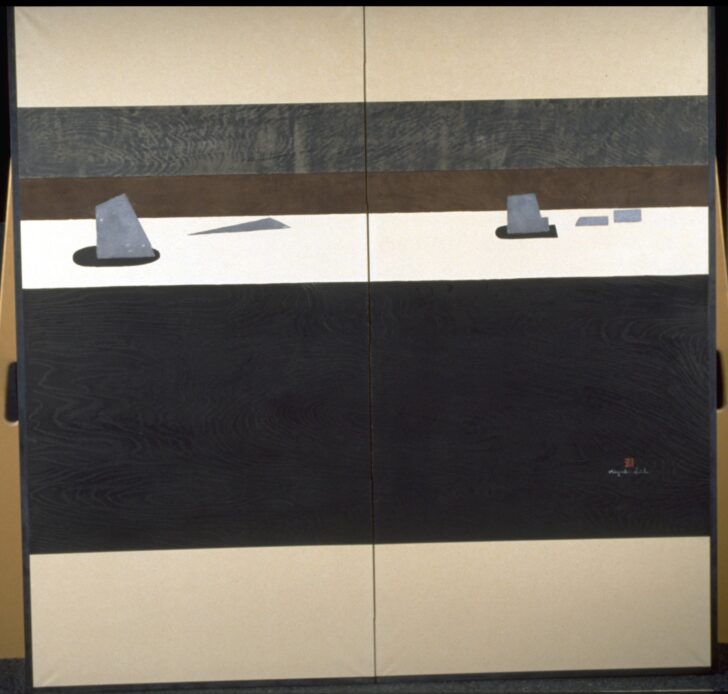Ryôan-ji Stone Garden, Kyoto
Saitō Kiyoshi

Description
Saito ̄ Kiyoshi
Japan, 1907–1997
Ryo ̄an-ji Stone Garden, Kyoto
Sho ̄wa period (1926–89)
1957
Two-panel folding screen, color woodblock print on paper
Gift of the artist, 1959/2.86
Saito ̄ Kiyoshi became an international sensation after winning
one of the prizes at the São Paulo Biennal art fair in Brazil in 1951.
He submitted this screen to the São Paulo Biennale in 1957 and
it, too, won a first prize, further increasing his fame. Here Saito ̄
depicts an iconic garden in Kyoto in a narrow strip, boldly using
wide stripes of subdued colors for the majority of the pictorial
space. The empty space, called ma (meaning “interval” in Japanese),
is an important concept in Japanese painting, calligraphy, poetry,
music, and dance. Saito ̄ decided to add the screen to his already
sizable donation of works to UMMA and it was sent to the
Museum directly from the Japanese embassy in Brazil.
Subject Matter:
Saitô Kiyoshi was a self-proclaimed fan of the Dutch De Stijl painter Piet Mondrian (1872–1944), known for paintings of pure geometry in primary colors and black. Saitô found his vocabulary of abstract forms particularly well-suited to conveying the austere, simple lines of centuries-old Japanese temples and architecture. By recasting Japanese art and culture in a modern idiom, Saitô’s work played an important role in legitimizing it in the eyes of the international art world.
Physical Description:
In this two-fold screen, the artist reveals the geometric beauty of the famous fifteenth-century stone garden at the Ryôanji temple, a UNESCO World Heritage site located in Kyoto.
Usage Rights:
If you are interested in using an image for a publication, please visit https://umma.umich.edu/request-image/ for more information and to fill out the online Image Rights and Reproductions Request Form.